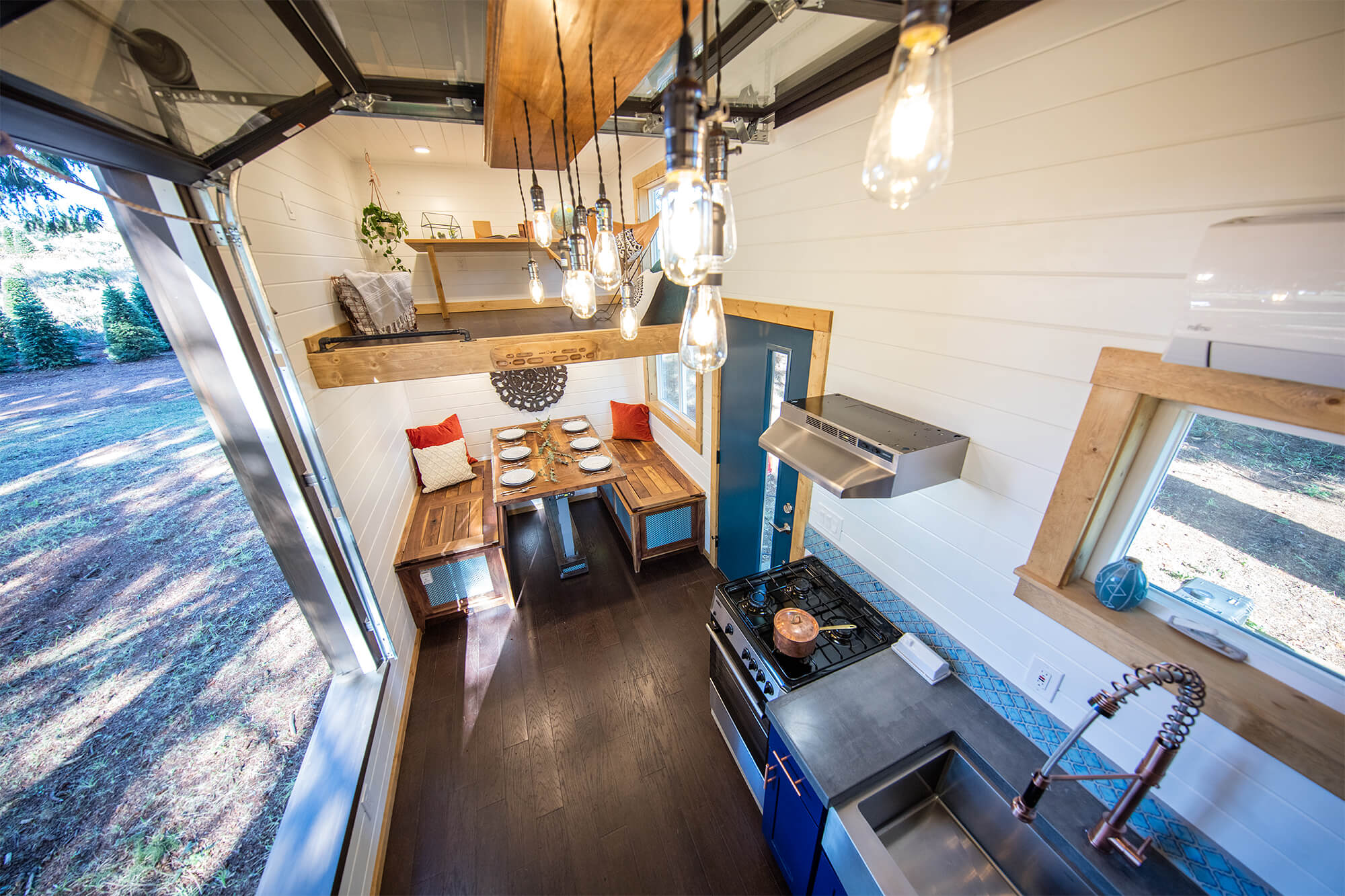Tiny homes, though constrained by size, are bursting with possibilities thanks to thoughtful interior design. Clever design not only optimizes functionality, but also helps to establish an atmosphere that feels spacious, comfortable, and uniquely yours. This guide explores numerous design strategies that can transform your tiny home into a stylish and efficient living space.
Space Optimization Strategies
Designing for Efficiency
Every square inch matters in a tiny home. Incorporating space-saving features such as built-in shelves, loft beds, and sliding doors can make a significant difference. Opt for custom built-ins that fit your space perfectly and fulfill your specific needs. Vertical space is often overlooked; use it to your advantage with high shelves or hanging storage.
Smart Storage Solutions
When space is scarce, it’s crucial to be strategic about storage. Using multifunctional furniture with hidden storage, like ottomans or bed frames with drawers, can save room. Consider 'invisible' storage, such as toe-kick drawers in the kitchen or behind-the-door shelves. Keep belongings organized with dividers, baskets, or boxes for easy accessibility.
Functional Furniture Selection
Functional furniture is key in tiny homes. Pieces that serve multiple purposes, such as a desk that folds into a dining table or a sofa that converts into a bed, allow you to maximize your space. Consider lightweight, easy-to-move furniture to reconfigure your space as needed.
Creating Illusions of Space
The Power of Light and Color
Light and color significantly influence how spacious a room feels. Light colors, particularly whites, and neutrals, make a room appear larger by reflecting light. Large windows, skylights, or solar tubes enhance natural light, giving an open, airy feel. Using a monochromatic color scheme can also create an illusion of expansiveness.
Reflective Surfaces
Mirrors and glass elements can amplify light and visually double your space. Large wall mirrors, mirrored furniture, or glass tabletops can create the illusion of depth and space. Transparent materials, such as acrylic or glass furniture, also provide functionality without visually crowding your space.
Openness and Flow
Aim for an open floor plan that encourages movement and flow. Avoid blocking walkways or sightlines with furniture. Keeping the center of the room clear can enhance spaciousness. Opt for furniture with exposed legs, which allows light to filter through and gives a more open feel.
Innovative Design Concepts
Vertical Living
In tiny homes, vertical space can become a gold mine of additional storage. High shelves, ceiling-mounted racks, and lofted areas are excellent for storing seldom-used items. Wall-mounted fold-down desks or tables provide workspace when needed and save space when not in use.
Transformative Design
Embrace transformative furniture and fixtures that adjust to meet your needs. Wall beds, extendable tables, and convertible sofas allow spaces to serve multiple purposes throughout the day. Even bathrooms can be adaptable, with fold-away sinks or bathtubs.
Multifunctional Areas
Consider combining areas to serve dual functions. A kitchen island can double as a dining table or a workspace. Bedrooms can double as offices with a lofted bed over a desk. Look for creative ways to use each area effectively for multiple activities.
Personalization and Style
Expressing Personality
While functionality is crucial, it's equally important that your tiny home reflects your personality. Express yourself with your favorite colors, patterns, or meaningful décor. Art, photographs, or unique textiles can add warmth and personality to your space.
Clever Décor Choices
Small details can make a big difference. Use rugs to define different areas within an open space. Wall art, plants, or decorative lighting can add style and character. Opt for pieces that reflect your personal aesthetic and also serve a function, like a stylish clock or a colorful storage bin.
Designing for Comfort
Despite their size, tiny homes can be incredibly cozy and inviting. Layer different textures and materials to create depth and warmth. Soft lighting, plush throws, and comfy pillows can make your space feel cozy and inviting. A well-placed window seat or reading nook can create a comfortable retreat.
Sustainable and Eco-Friendly Design
Eco-Conscious Choices
Tiny homes naturally promote sustainability through their small footprints. Enhance this by choosing eco-friendly materials such as bamboo, reclaimed wood, or recycled metal for your construction and décor. Non-toxic paints and finishes also contribute to a healthier indoor environment.
Energy Efficiency
Consider energy-efficient appliances, LED lighting, and high-quality insulation to optimize energy use. Solar panels can reduce your reliance on the grid, while a well-designed ventilation system can keep your home comfortable without excessive heating or cooling.
Indoor Greenery
Indoor plants not only improve air quality but also enhance your connection with nature. Use vertical gardens, hanging planters, or even a mini indoor greenhouse. Choose low-maintenance plants that thrive indoors and consider their light and water requirements.
Outdoor Extensions
Outdoor Living Spaces
Extend your living space outdoors with a patio, deck, or garden. These spaces provide additional areas for dining, entertaining, or relaxing. Install an awning or a retractable roof for shade and weather protection.
Rooftop Retreats
If your tiny home's structure allows, consider converting your roof into a functional space. A rooftop deck or garden can offer incredible views and a unique outdoor living area. Ensure you have safe and sturdy access, and consider elements such as railings and weatherproof furniture.
Balcony Bliss
Balconies, even small ones, can provide a refreshing outdoor escape. Set up a bistro table and chairs for al fresco dining, or a hammock for relaxation. Use vertical space for outdoor storage or planters.
Conclusion
The art of tiny home design is more than just a study of space optimization—it's a venture into unlocking the beauty and potential of small spaces, transforming them into cozy, functional sanctuaries. As we've explored in this guide, designing your dream tiny home isn't about sacrificing comfort but rather about innovating, and using thoughtful design hacks to create a personalized and inviting space.






Share: